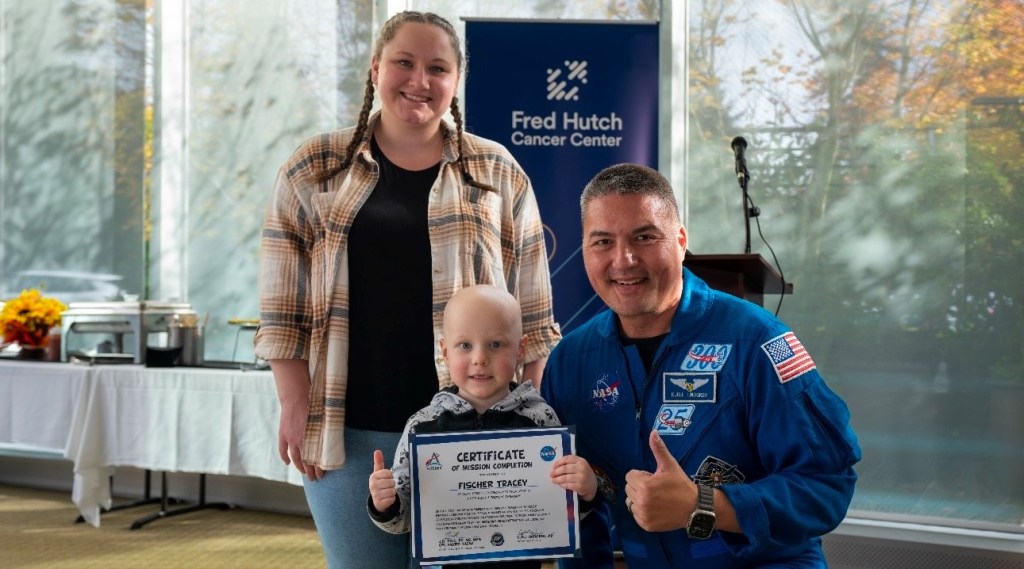The major activity at the Kennedy Space Center (KSC) the first week of July 1969 was the Countdown Demonstration Test (CDDT) for the Apollo 11 Moon landing mission. The CDDT, a full dress rehearsal for the actual countdown to launch, consisted of two parts. The “wet” test included fueling the rocket as if for flight, with the countdown cutting off just prior to first stage engine ignition, and did not involve the flight crew. This was followed by the “dry” test, an abbreviated countdown without fueling the rocket but with the flight crew boarding the Command Module (CM) as if on launch day. The wet countdown was completed on July 2, and the dry test the next day, with astronauts Neil A. Armstrong, Edwin E. “Buzz” Aldrin, and Michael Collins suiting up and climbing aboard their CM. Controllers in Firing Room 1 of the Launch Control Center (LCC) at Launch Complex 39 monitored all aspects of the CDDT as they would on launch day. The test was a complete success, clearing the way for the start of the actual countdown.
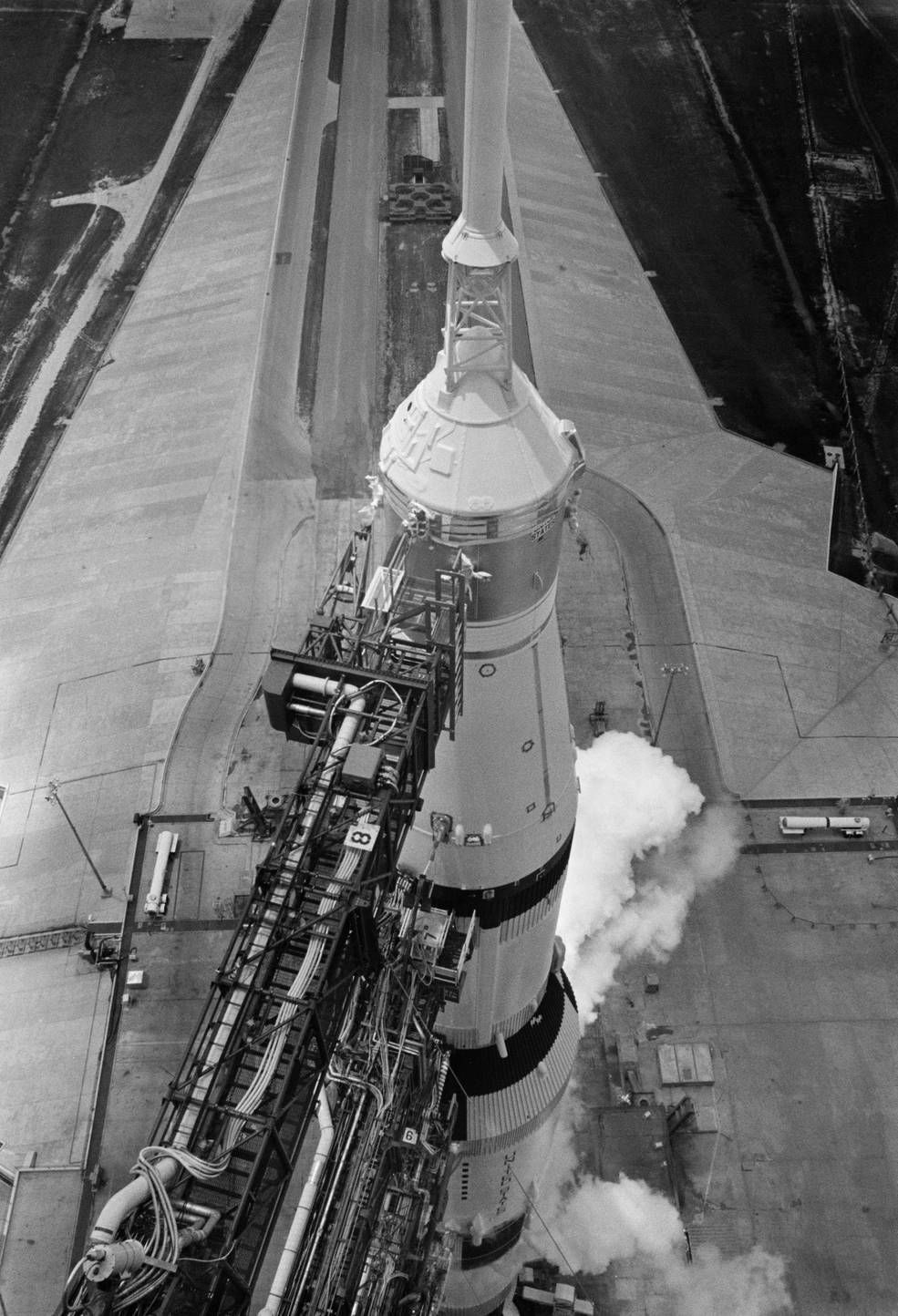
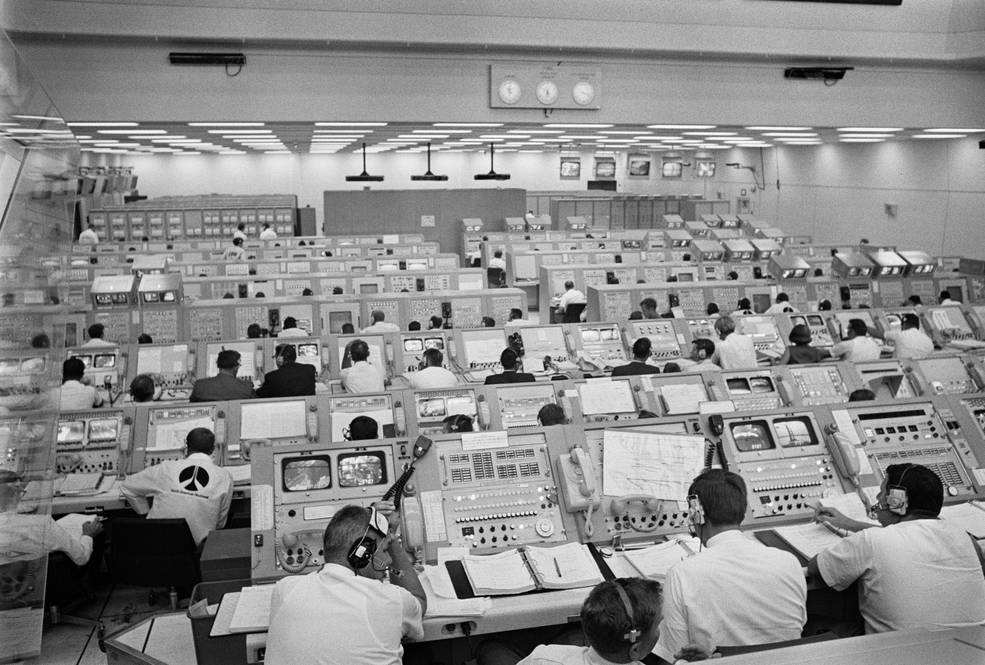
Left: Vapor emanating from the Saturn V rocket during the wet phase of the Apollo 11 CDDT. Right: Firing Room 1 in the LCC during the Apollo 11 CDDT.
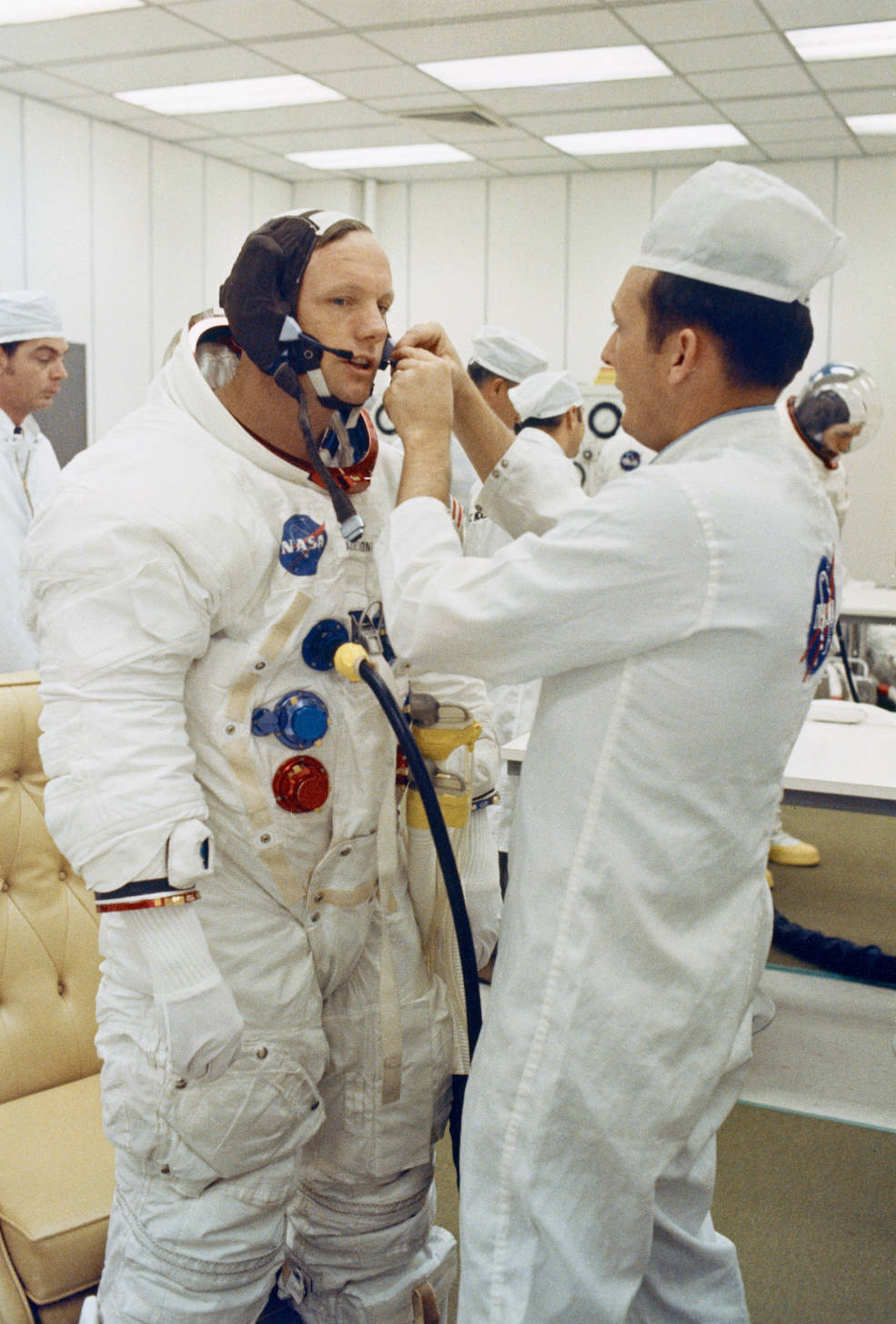
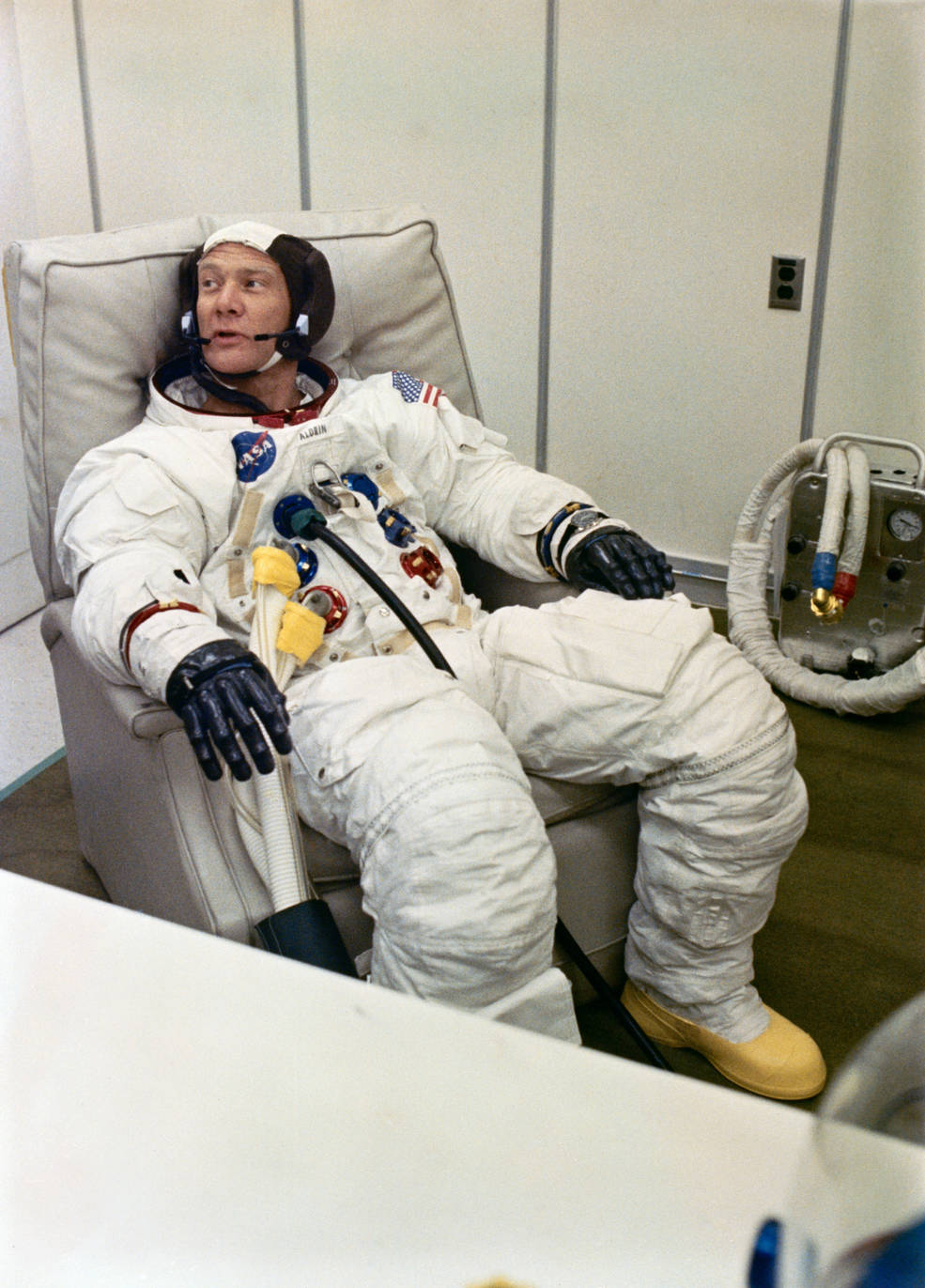
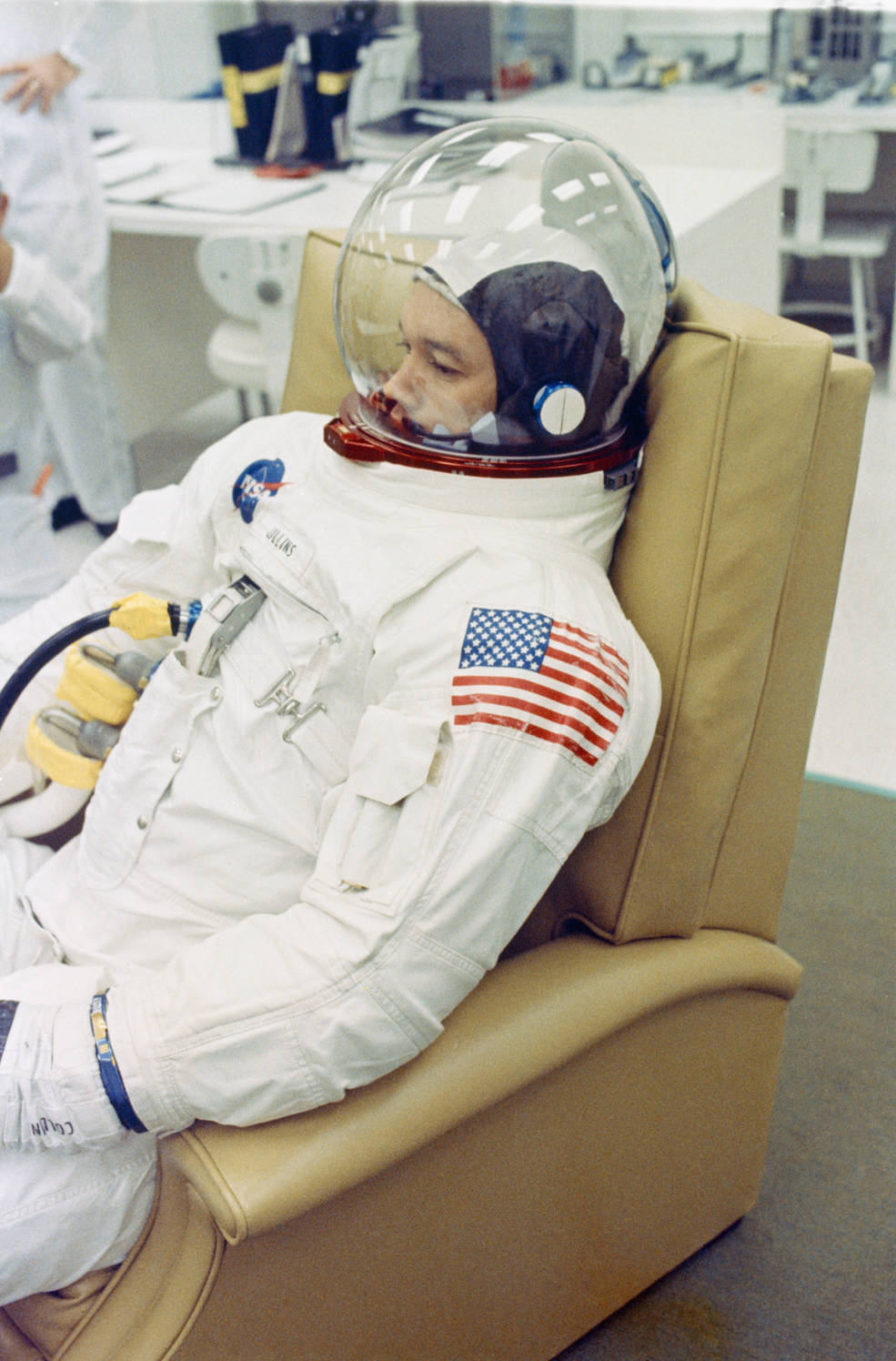
Apollo 11 astronauts (left to right) Armstrong, Aldrin, and Collins suiting up in preparation for the CDDT.
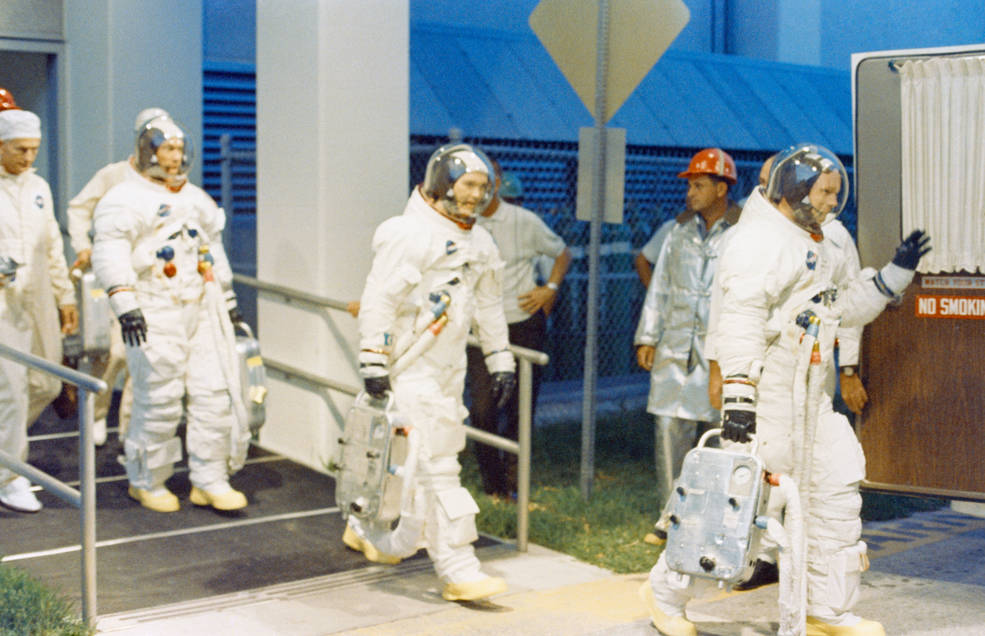
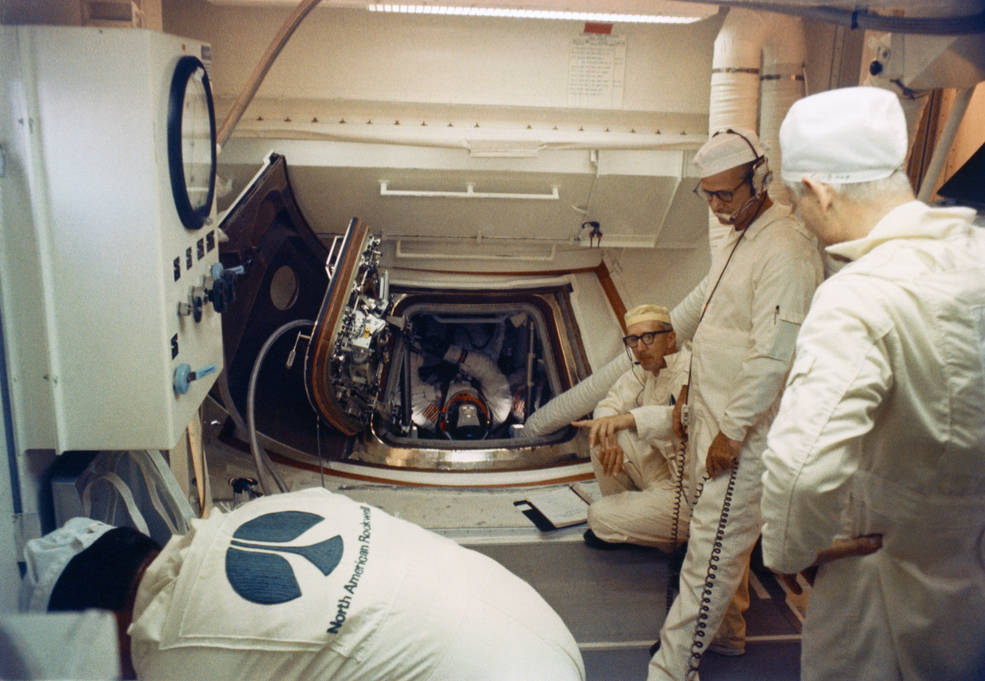
Left: Apollo 11 astronauts (left to right) Aldrin, Collins, and Armstrong walk out from crew quarters to the Astrovan on their way to Launch Pad 39A for the CDDT. Right: In the White Room at Launch Pad 39A, the closeout crew prepare to close the hatch to the Apollo 11 CM during the CDDT.
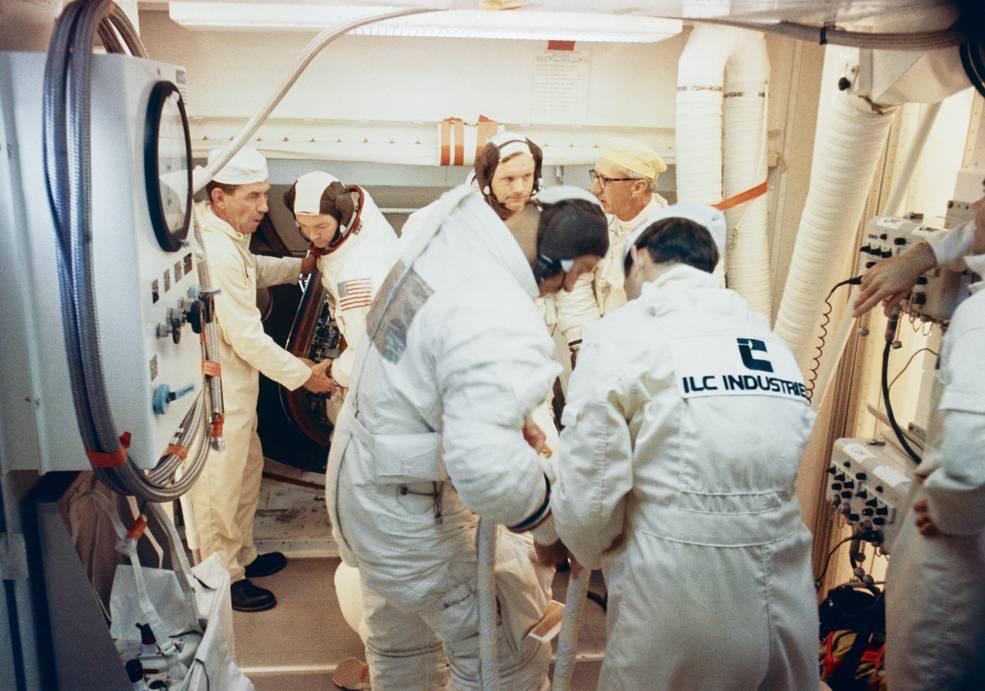
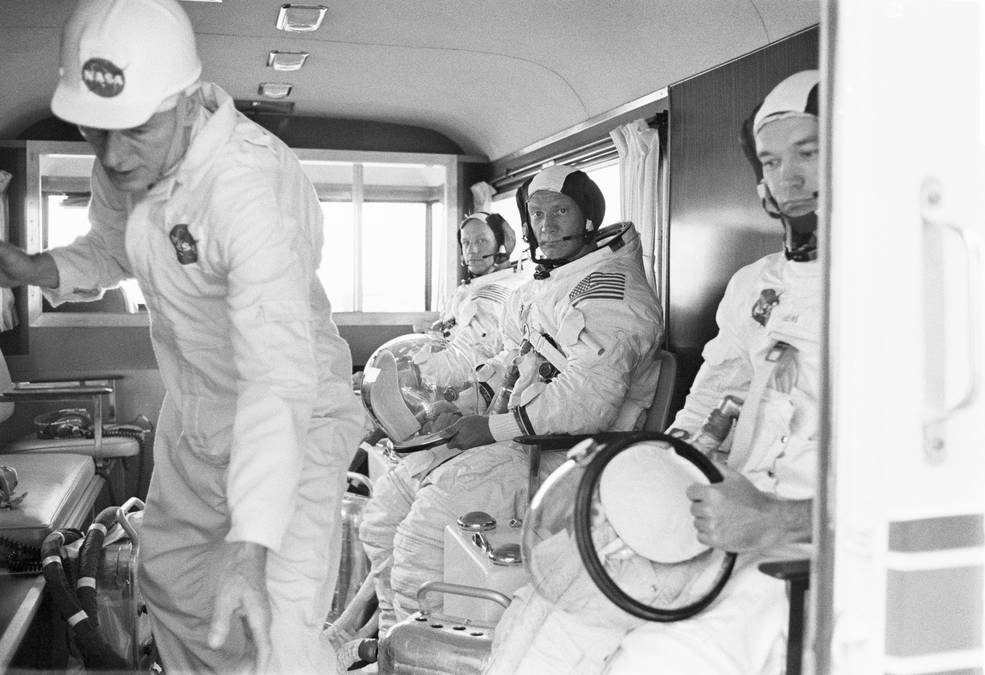
Left: Apollo 11 astronauts (back to front) Collins, Armstrong, and Aldrin have exited the CM into the White Room at the conclusion of the CDDT. Right: Apollo 11 astronauts (left to right) Armstrong, Aldrin, and Collins in the Astrovan after the conclusion of the CDDT.
On July 2, NASA announced that Armstrong and Aldrin would leave three symbolic items behind on the Moon to commemorate the historic first landing – an American flag, a commemorative plaque, and a silicon disc bearing messages from world leaders. NASA Administrator Thomas O. Paine created the Committee on Symbolic Activities for the First Lunar Landing and appointed Willis H. Shapley, NASA Associate Deputy Administrator, as its chair on Feb. 25, 1969. After reviewing advice from the Smithsonian Institution, the Library of Congress, the Archivist of the United States, the NASA Historical Advisory Committee, the Space Council, and congressional committees, Shapley’s committee recommended to Administrator Paine that these three items be flown. The astronauts would plant the three-by-five-foot flag near their Lunar Module (LM) during their spacewalk. The stainless steel plaque bore the images of the two hemispheres of the Earth and this inscription,
Here men from the Planet Earth
first set foot upon the Moon
July 1969 A.D.
we came in peace for all mankind
The signatures of the three astronauts and President Richard M. Nixon also appeared on the plaque. Workers mounted it on the forward landing leg strut of the LM. The messages of goodwill from 73 world leaders were etched on the one-and-one-half-inch silicon disc using the technique to make microcircuits for electronic equipment. The crew placed the disc on the lunar surface at the end of their spacewalk.
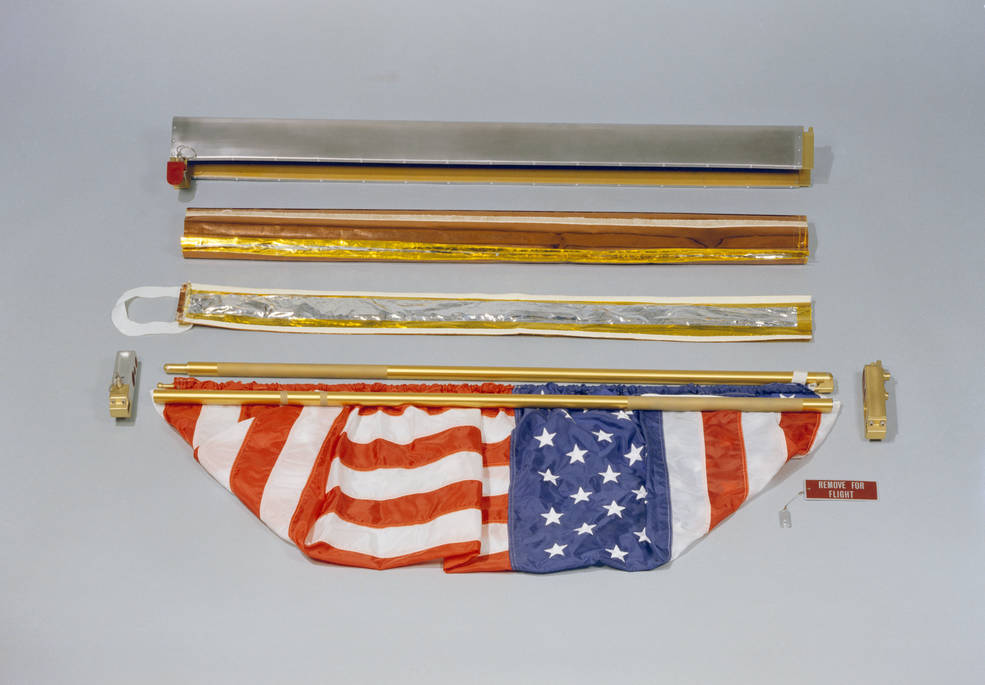
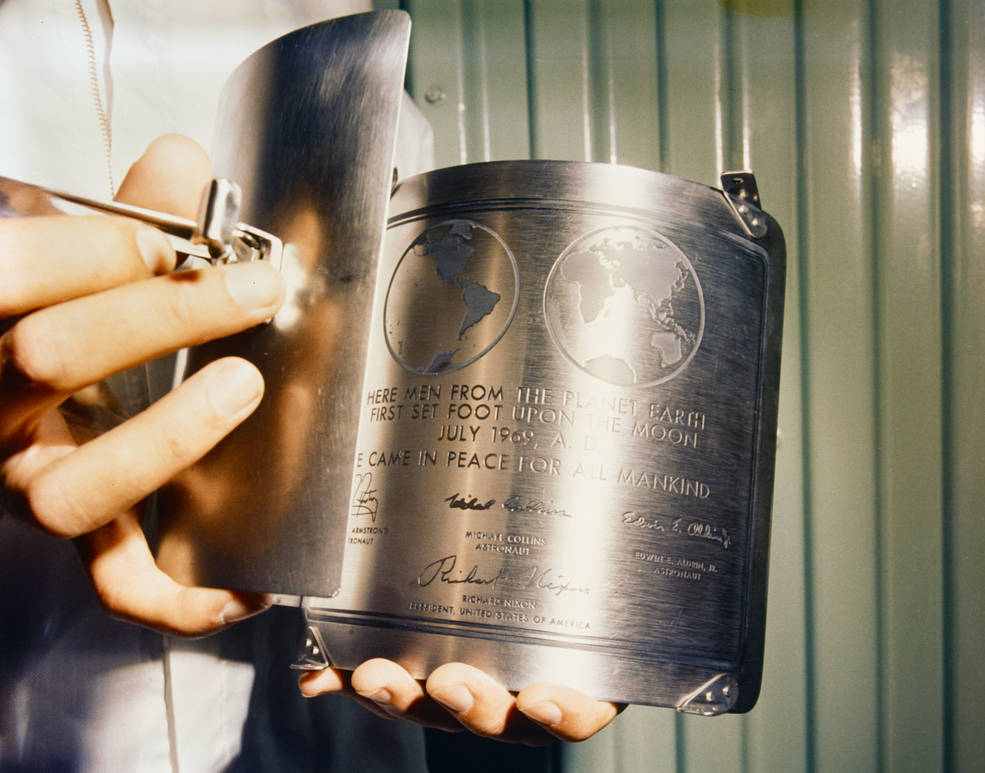
![]()
Left: The Lunar Flag Assembly. Middle: Stainless steel commemorative plaque. Right: Silicon disc containing messages of goodwill from world leaders.
During a July 5 press conference in the auditorium of the Manned Spacecraft Center (MSC), now the Johnson Space Center in Houston, the Apollo 11 astronauts revealed the call signs for their spacecraft. They named their CM Columbia and their LM Eagle. “We selected these as being representative of the flight, the nation’s hope,” said Armstrong. Columbia is a national symbol, standing atop the Capitol in Washington, D.C. The CM was also named in recognition of the spaceship in the 1865 Jules Verne novel From the Earth to the Moon. The LM was named after the symbol of the United States, the bald eagle, featured on the Apollo 11 mission patch. In a second event, the astronauts answered reporters’ questions from inside a glass-enclosed conference room at the Lunar Receiving Laboratory (LRL). After their mission, the returning astronauts were quarantined in the LRL for 21 days to prevent any back contamination of the Earth by any possible lunar microorganisms. During that time, they held press conferences and other events in the glass-enclosed conference room.
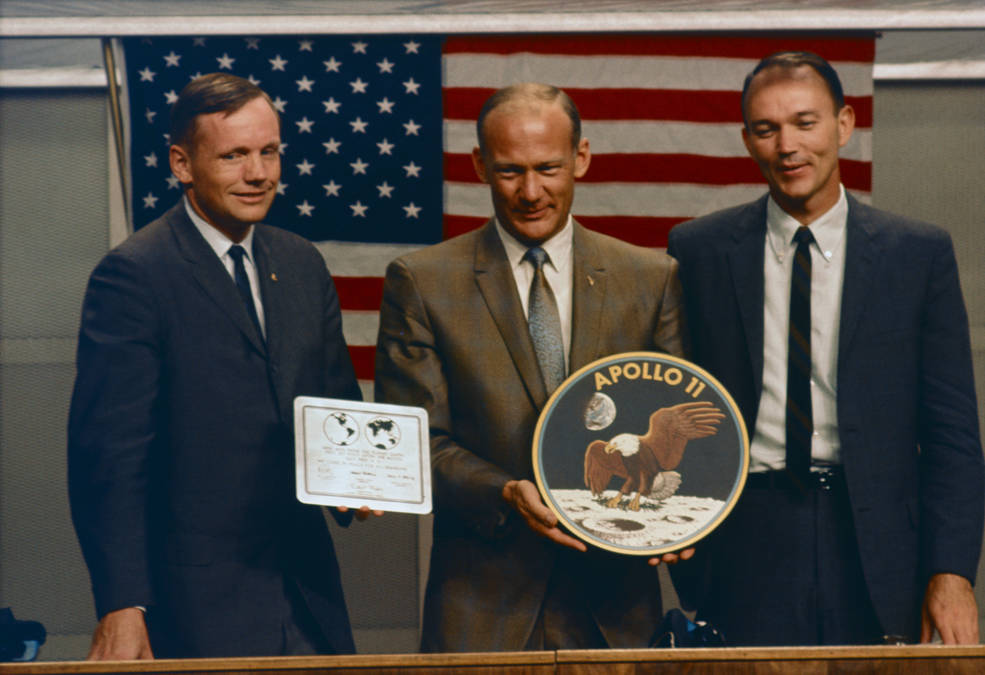
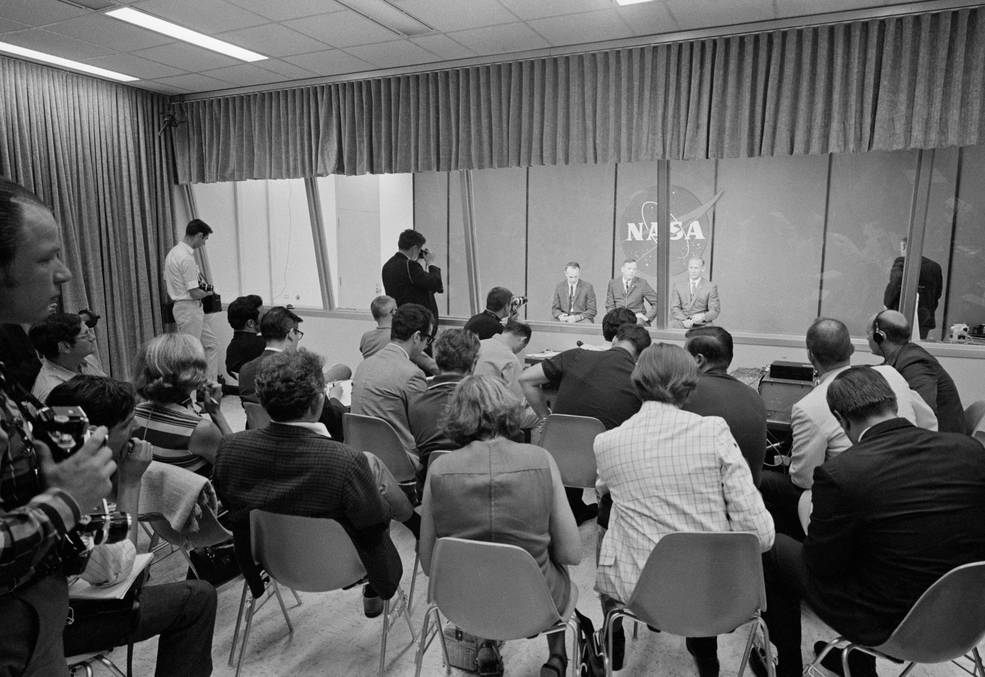
Left: Apollo 11 astronauts (left to right) Armstrong, Aldrin, and Collins holding a copy of the commemorative plaque they will leave behind on the Moon and their mission patch. Right: The Apollo 11 astronauts in the glass-enclosed room at the LRL.
Halfway around the world, on July 2 the Apollo 11 Prime Recovery Ship USS Hornet (CVS-12) arrived at Pearl Harbor, Hawaii, to begin provisioning for her historic assignment. Workers loaded a boilerplate Apollo capsule onto the aircraft carrier to be used for recovery practice. The NASA recovery team, the Frogmen swimmers from the US Navy’s Underwater Demolition Team (UDT) who assisted with the recovery, and some media personnel arrived onboard. For the recovery operation, Capt. Carl J. Seiberlich adopted the motto Hornet Plus Three, indicating the goal of a safe recovery of the three astronauts returning from the Moon. On July 3, Capt. Seiberlich introduced the 35-member NASA recovery team to the Hornet’s crew. Donald E. Stullken, Chief of the Recovery Operations Branch at MSC, who led the NASA team was the inventor of the inflatable flotation collar attached by swimmers to the capsule after splashdown. His assistant John C. Stonesifer was responsible for decontamination and quarantine operations. Stullken and Stonesifer briefed Hornet’s 90-man Command Module Retrieval Team on all events associated with the recovery and retrieval of an Apollo capsule and its crew.
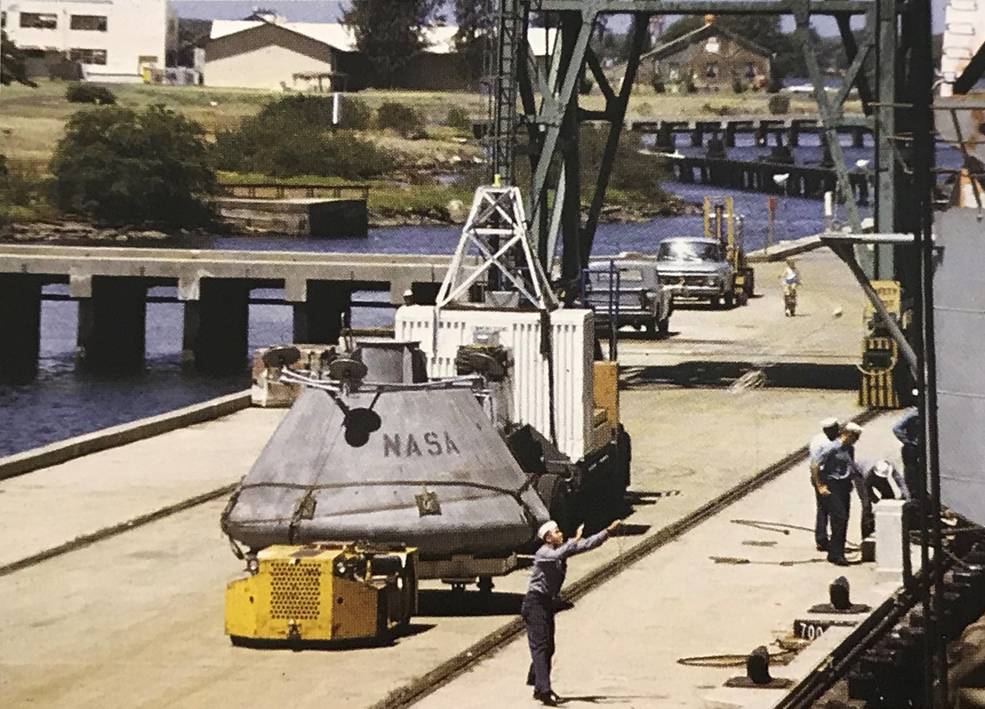
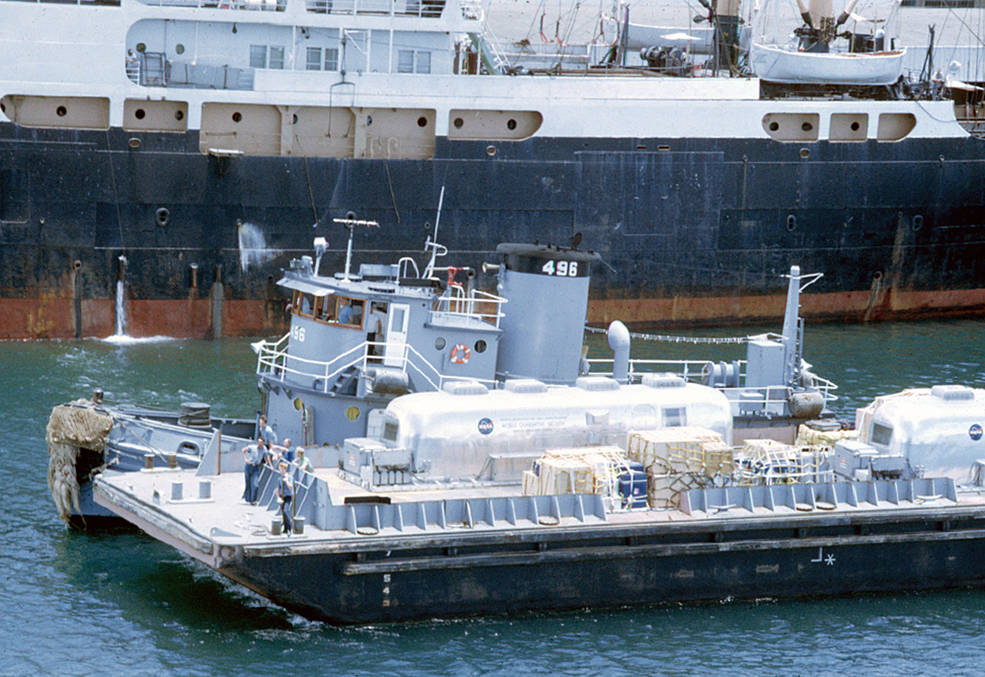
Left: Workers prepare to hoist a boilerplate Apollo CM aboard USS Hornet in Pearl Harbor. Right: Two MQFs arriving by barge to be loaded aboard the USS Hornet in Pearl Harbor. Credits: US Navy Bob Fish, US Navy.
On July 6, workers loaded two Mobile Quarantine Facilities (MQFs) aboard Hornet. One MQF was to house the returning astronauts, a flight surgeon and an engineer from shortly after splashdown until their arrival at the LRL in Houston several days later. The second MQF was designated as a backup should there be a problem with the first or if quarantine protocols were violated at any time requiring additional personnel to be isolated. Along with the MQFs, Navy personnel loaded other equipment necessary for the recovery, including 55 one-gallon containers of sodium hypochlorite to be used as a disinfectant.
In case Apollo 11 were not successful in accomplishing the first Moon landing, NASA continued preparations to support an Apollo 12 mission as early as September 1969. On July 1, workers in KSC’s Vehicle Assembly Building stacked the spacecraft atop its Saturn V rocket.
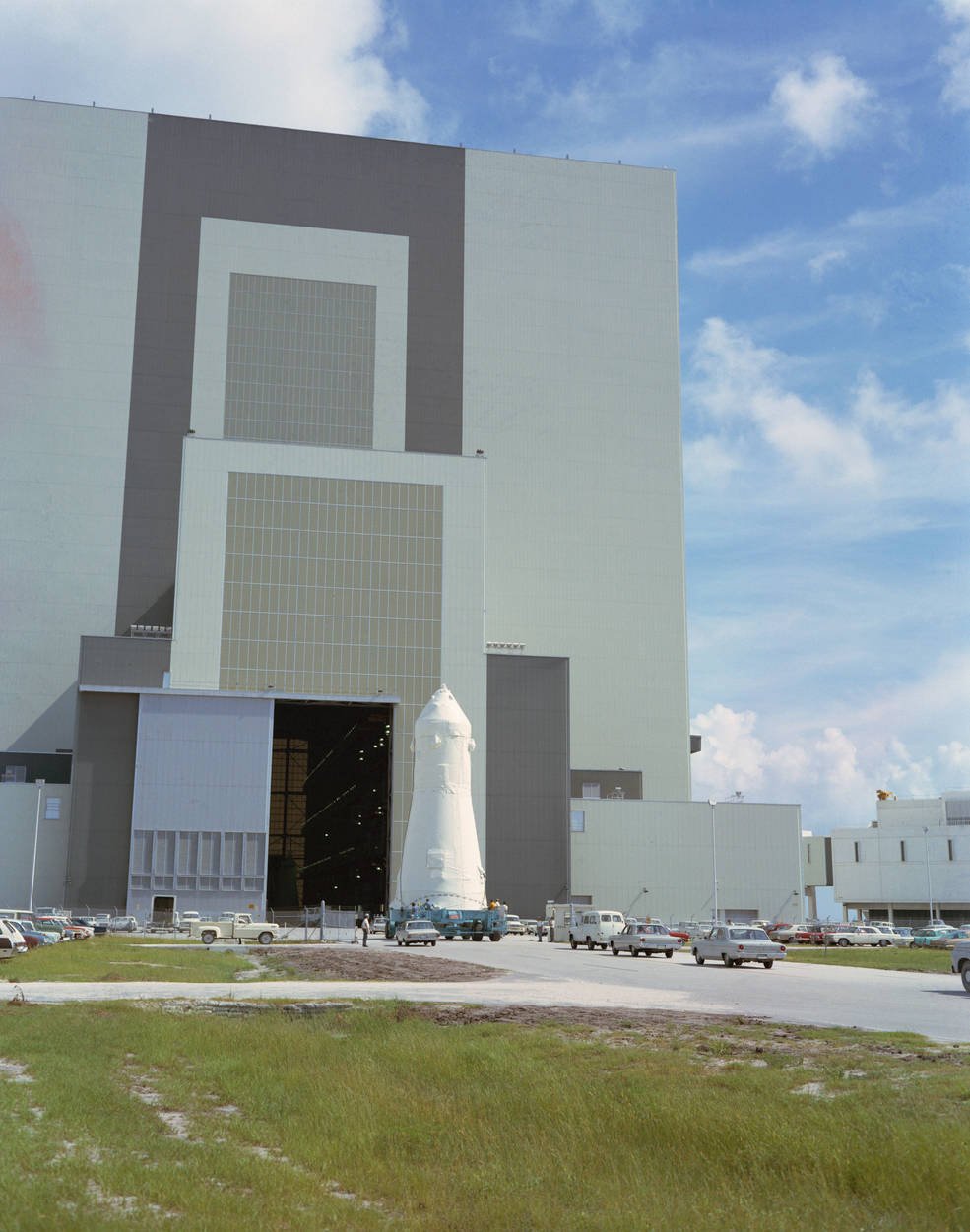
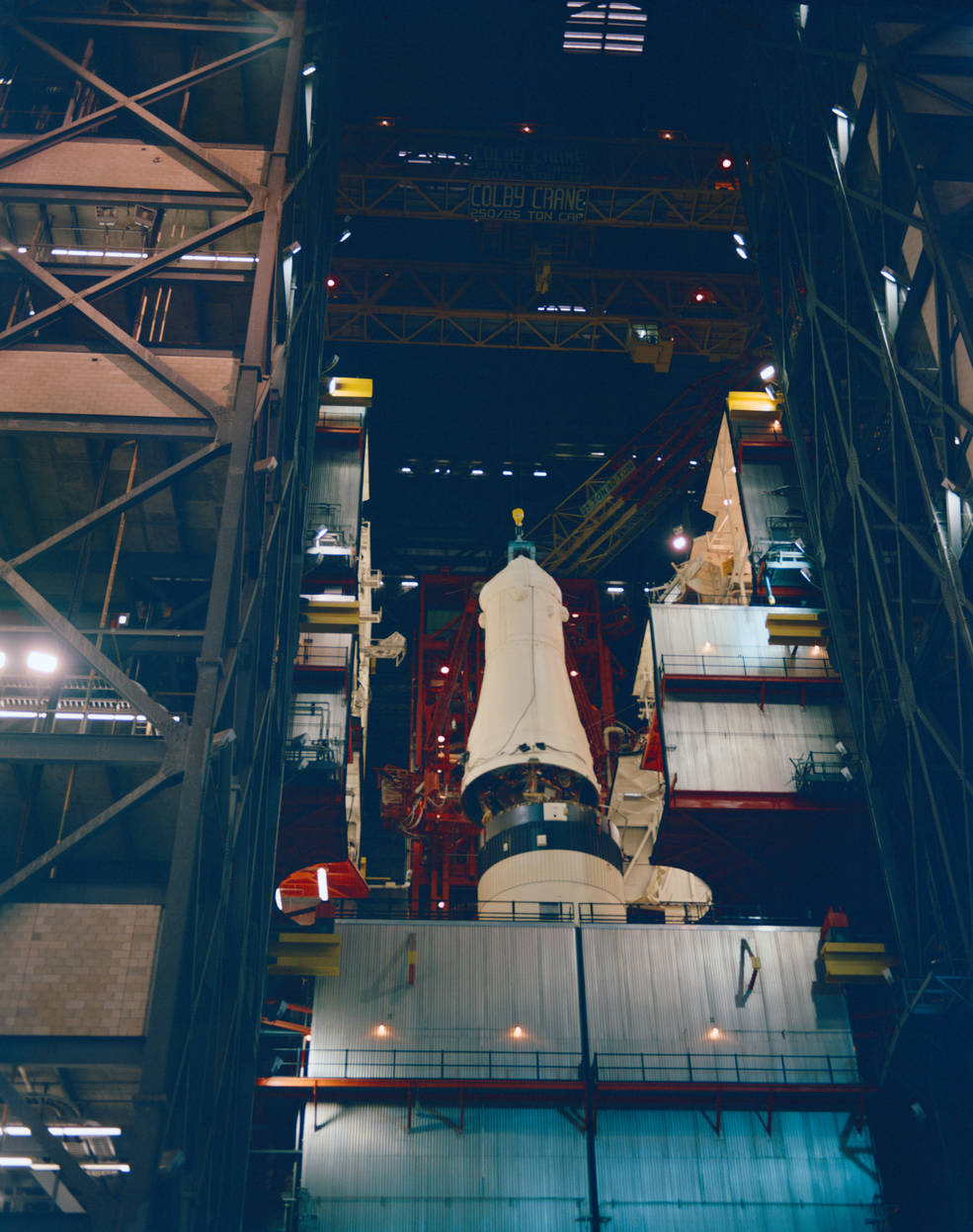
Left: Apollo 12 spacecraft arriving at the VAB. Right: Apollo 12 spacecraft being lowered onto the Saturn V rocket in the VAB.



















